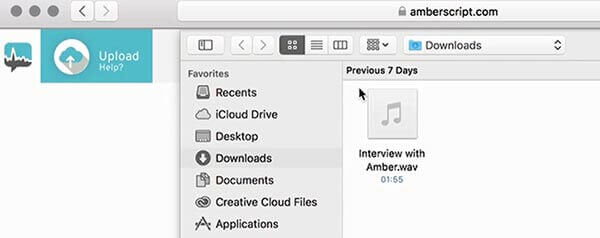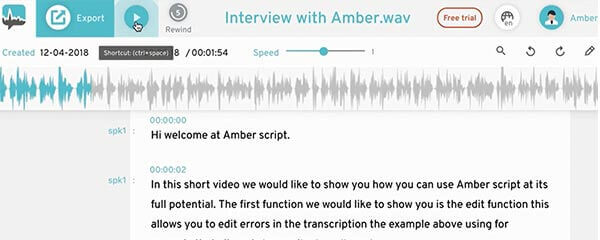Audio Transcription: Get your ready transcript within minutes
Audio transcription services have become common among students in colleges and universities. In an effort to come up with an impressive thesis, students mostly record all their research audios during data collection, and they later convert the audio into text to get a comprehensive academic research paper. This article will discuss everything you need to know about audio transcription and its benefits, and how best you can use transcription for your thesis.
Common questions about Audio Transcription
With the professional standard of a typing rate of 75 words per minute, it would take an average of four to five hours to transcribe a recorded audio of one hour.
However, this may vary due to several factors such as the number of speakers in the audio, their speaking speed, and the clarity of their speech as well as that of the recording.
There are generally three types of audio transcription including manual and automatic transcription which are categorized further into verbatim, edited and intelligent transcriptions. Manual transcription involves splitting the audio files and sending them to multiple transcriptionists based on their specialization.
Automatic audio transcription, on the other hand, uses speech-recognition technology to type recorded audio.
Audio transcriptions done by professional transcribers are charged per recorded audio minute. This rate varies from company to company and from individual transcriptionists in the various freelance websites that offer audio transcription services.
In addition to saving you time, audio transcription enables you to capture every detail of a lecture, an interview, or a group discussion with more accuracy.
Research work requires accurate reviews from different people; therefore, recording their reviews and later converting each word into text will help you gather enough content for your research in a more convenient way.
Definition: Audio Transcription
Audio transcription is the conversion of content in audio and verbal materials into a written format using an audio transcription tool or a transcriptionist. Audio transcription tools are often programmed software such as AmberScript, used in converting audio into text. Audio transcription varies depending on the type of content being transcribed and the method applied in the transcription process. Academic transcription is, however, unique from other forms of transcriptions due to the urgency it carries and the level of accuracy needed in producing the written material.
How Audio Transcription works
Audio transcription works by recording audios and later converting them into text, using transcription software. The software usually has a programmed extensive dictionary which it uses as a reference to translate any sound that forms human speech. This transcription software uses automated speech technology which is able to process natural human language.
The following is the audio transcription process to show you how it works:
1. Audio or video upload
Upload the audio file to the AmberScript page. If you need several transcriptions of different interviews, you can of course repeat this process!

2. Wait a moment
The transcription software now completely independently handles the audio transcripton of the file and creates a transcription of the interview. This means that it transforms the spoken word into text. This only takes a few moments and is thus much more effective than a manual transcription of the interview.
3. Use oft he audio transcription
Now you get a ready transcript with which you can work smoothly. Our tip: No matter which transcription software you use, read through the transcription of the interview once again. Because no programme is perfect!
Then you can, for example, search for specific text passages in the document and use the timestamps to prove such a clear citation in the final thesis.

What is the difference between manual and automatic transcription?
Manual transcription is much slower than automatic transcription. This is because the transcriptionist has to playback the audio in order to get a glimpse of every detail of the audio for typing. Manual transcription takes longer but is considered to be more accurate than automatic transcription where there is no room for correction of errors.
Automatic transcription is not perfect but it gives a fast-timecoded transcript which makes editing easier and smooth.
Audio Transcription for your thesis: Our tips
It is clear that audio transcription is quite beneficial to researchers and students, especially those preparing for their thesis and dissertations. Students conducting a research interview might find the process simple and fun; however, condensing the recorded interviews into a useful and reasonable research paper can be tedious and time-consuming.
It would take a student many hours and probably days to convert the interview into text. This is where transcription tools come in. They will help you compile a well-researched thesis. Here are our tips on how to undertake audio transcription for your thesis;
1. Get a professional transcriptionist
There are numerous academic transcription services today. You definitely would like to refocus your energy on other important things that will build your career by allowing professional transcriptionists to handle the audio transcription work for you. You should, however, go for transcription service providers with a good reputation and especially those that guarantee confidentiality for your coursework. However, one of the drawbacks of professional transcribing is that the costs often do not fit into a student budget.
2. Using Audio Transcription tools
If you decide to work on your audio transcription all by yourself, then you will need the right transcription tool for efficient and timely audio transcription. Here’s how to best use a transcription tool.
- Have a reliable transcription software programme. This will allow you to control the audio for fast typing.
- Check on your typing speed. To get the best of any transcription tool, you must be a standard typist. Your transcribing speed is dependent on your typing speed.
- Use a quality headset. How good you hear the audio you intend to transcribe will determine how good and fast your transcription will be. Have a noise-cancelling headset.
- Be conversant with your transcription tool and work in a quiet environment for better results.
- You can use foot pedals to control audio playback options using your foot.
3. Efficient Audio Transcription
Having good transcription tools can yield great results but having the right techniques is equally as important. For efficient audio transcription;
- Enhance audio quality. You can do this by using an audio-editing programme, noise filters, or by having a volume boost.
- Use timestamps. These are coded tags that you insert into the transcript to analyse later.
Audio Transcription in a nutshell
Audio transcription is the conversion of audio into text. This technology has proven to be of great benefit to students, especially those preparing for their thesis and dissertations. There are two types of audio transcription, namely manual and automatic transcription. Automatic transcription is much faster than manual transcription but not as perfect as manual. With a standard typist, it takes three to four hours to transcribe a one-hour recorded video. Payments for these transcriptions are on minute-basis which differ with companies and individual transcriptionists.
Transcription is an intense process but hiring a professional transcriptionist would save you time and energy. However, if you prefer to transcribe your audio on your own, then having the right transcription tools and using the right techniques will enable you to get the best out of audio transcription as a student.
